The Thinker

Photo: Roman Suzuki via Wikimedia Commons (CC BY 2.0)
Designed in 1880, Le Penseur or The Thinker is one of the most famous sculptures in the world. Though initially imagined as a subject of The Gates of Hell, the pensive figure took on a life its own when Rodin opted to cast a larger-than-life bronze version in 1904.
Seated on a rock with his chin resting on his closed fist, the nude figure is depicted deep in the thought. Due to his contemplative demeanor, The Thinker is often viewed as an embodiment of philosophy—though the figure was originally referred to by Rodin as a poet. Due to its likeness to Il Penseroso (The Thinker)—an Italian Renaissance sculpture by Michelangelo—however, the sculpture became known as The Thinker.

Left photo: Rufus46 (CC BY-SA 3.0) via Wikimedia Commons (CC BY-SA 3.0)
Right photo: GordonMakryllos via Wikimedia Commons (CC BY-SA 3.0)
Furthermore, while the reason behind the figure’s nudity is unclear, art historians believe that Rodin looked to Michelangelo’s unclothed sculptures—including his iconic David statue—for inspiration. Rodin was interested in the Renaissance artist‘s knowledge of anatomy and approach to the human figure, which helped shape his own practice. “Michelangelo revealed me to myself, revealed to me the truth of forms,” he explained. “I went to Florence to find what I possessed in Paris and elsewhere, but it is he who taught me this.”

Photo: Tammy Lo via Wikimedia Commons (CC BY 2.0)
Though the first large-scale version of The Thinker is located in Paris’ Rodin Museum, 27 other monumental castings can be found in fine art museums, sculpture gardens, and other world-class collections.

Photo: Brianlocicero via Wikimedia Commons (Public Domain)
In addition to these full-sized replicas, many smaller castings—rendered in bronze, plaster, and other mediums—exist throughout the world.
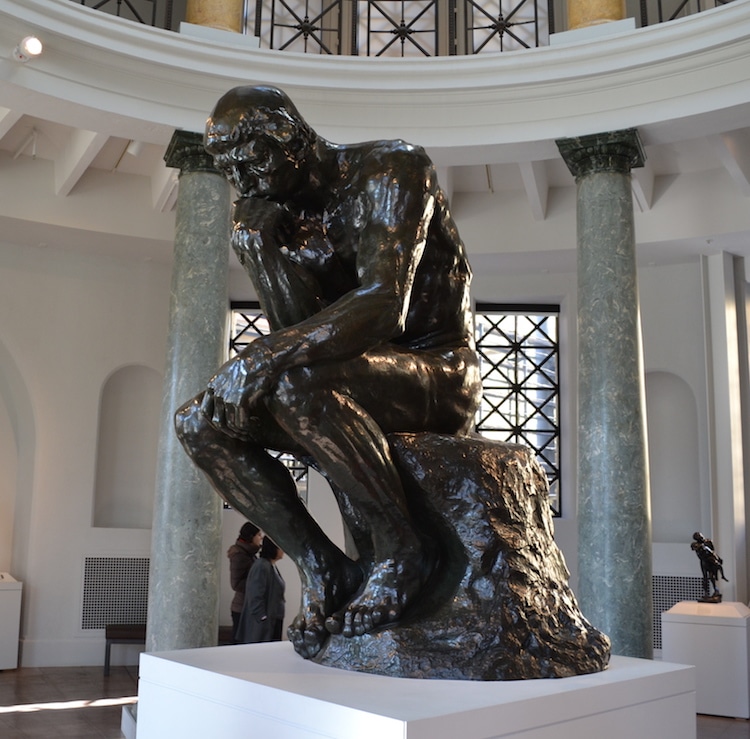
Photo: Oleg Alexandrov via Wikimedia Commons (CC BY-SA 3.0)
The Kiss
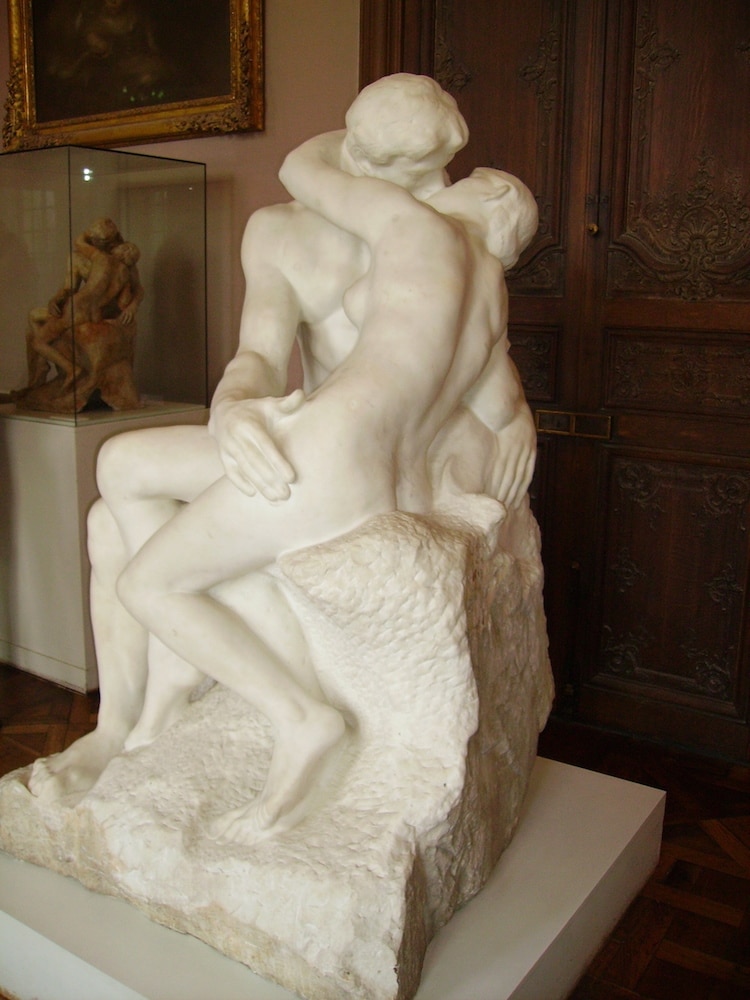
Photo: Yair Haklai via Wikimedia Commons (CC BY-SA 4.0)
Le Baiser, or The Kiss, was created between 1888 and 1898. With such a straightforward title, many people assume it is a simple study love between two unknown figures. However, the piece was actually originally titled Francesca da Rimini, named after the real-life 13th-century noblewoman and subject of the sculpture.
Francesca da Rimini is famous for the affair that she had with her brother-in-law, Paolo Malatesta. The two fell in love and were eventually murdered by Da Rimini’s infuriated husband.
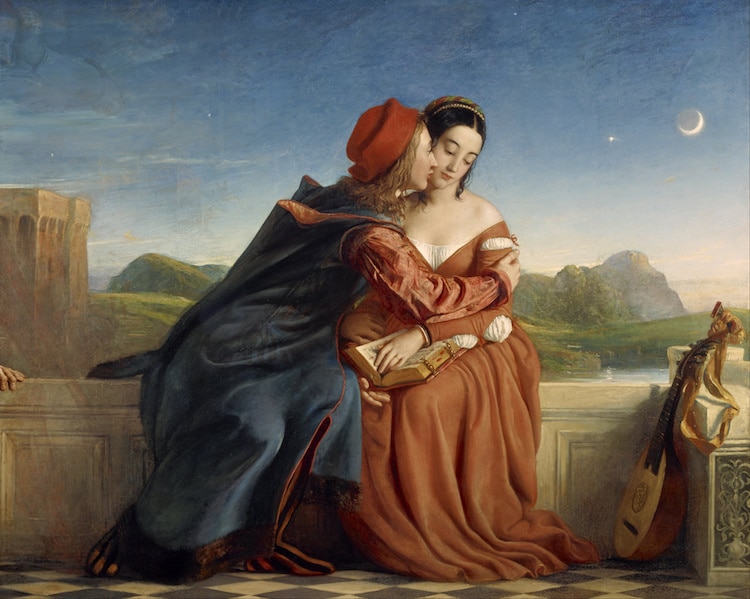
‘Francesca da Rimini’ by William Dyce (1837)
Photo: Google Arts & Culture via Wikimedia Commons (Public Domain)
The story of Da Rimini and Malatesta was featured in Dante’s Divine Comedy, making it a perfect fit for the Gates of Hell. Rodin, however, viewed the sensual sculpture as little more than “a large sculpted knick-knack following the usual formula,” and removed it from his design. The pair was replaced with another couple and adapted as free-standing sculptures.
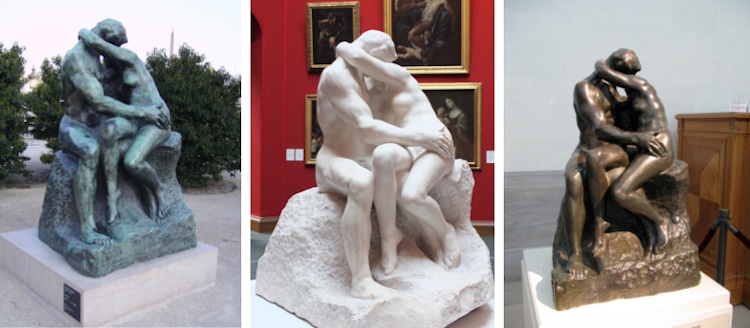
Left photo: Yair Haklai via Wikimedia Commons(CC BY-SA 3.0)
Center photo: Ad Meskens. via Wikimedia Commons (CC BY-SA 3.0)
Right photo: Yair Haklai via Wikimedia Commons (CC BY-SA 4.0)
The first large-scale sculpture was made of marble, and, like many other originals, is located in the Rodin Museum in Paris.
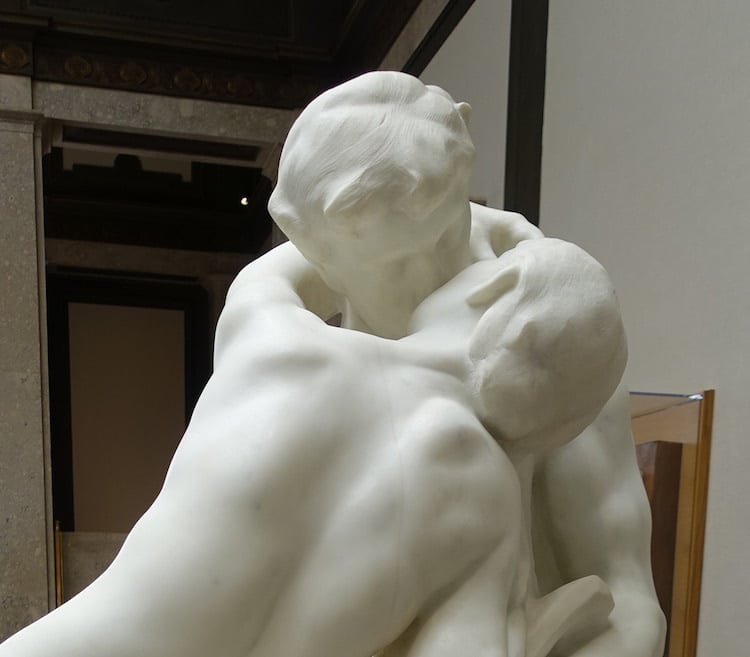
Photo: GordonMakryllos via Wikimedia Commons (CC BY-SA 4.0)
The Three Shades
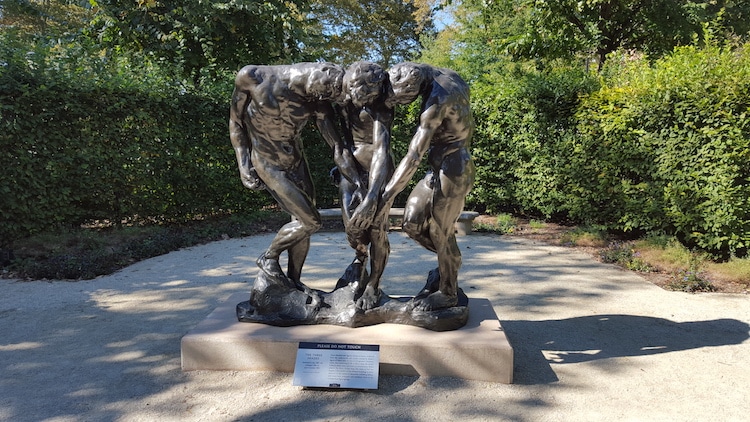
Photo: Thekohser via Wikimedia Commons (CC BY-SA 4.0)
Like The Thinker and The Kiss, The Three Shades sculpture began as a detail on The Gates of Hell. Intended to depict the souls of the damned from Dante’s poem, the piece features three frightening figures.
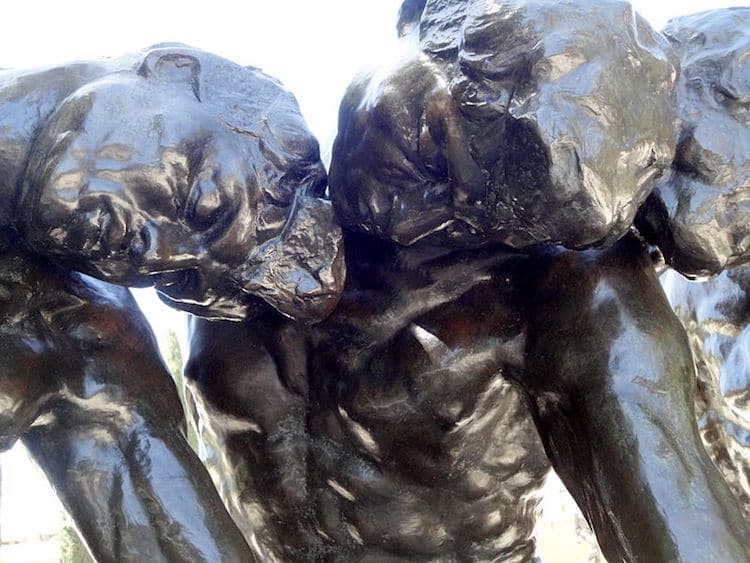
Photo: Emw via Wikimedia Commons (CC BY-SA 3.0)
While, at first glance, the sculpture appears to comprise a trio of unique individuals, closer inspection reveals that they are actually identical to one another. Rodin simply varied the orientations of the figures, giving onlookers different views of the same model.
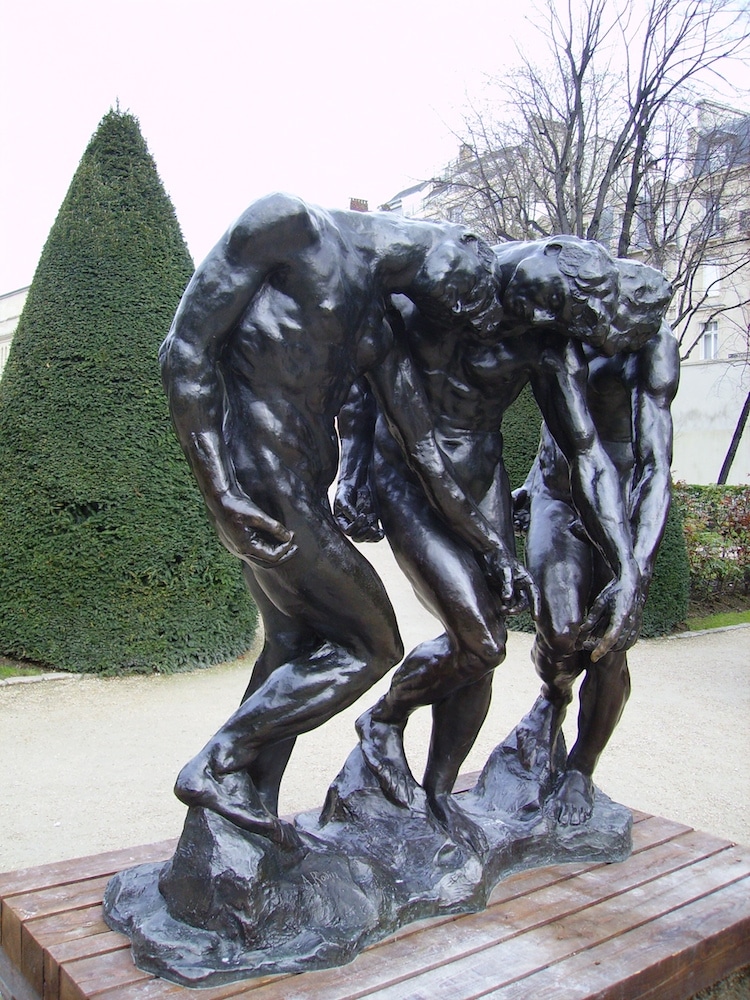
Photo: Miguel Hermoso Cuesta via Wikimedia Commons (CC BY-SA 4.0)
Dramatically slumped over and seemingly sickly, the “shades” point downward; this gesture references their role in Dante’s tale, as they draw attention to an inscription with a particularly foreboding message: “Abandon hope, all ye who enter here.” Rodin had originally topped his Infero-inspired portal with The Three Shades, enabling them to welcome—and warn—curious observers.
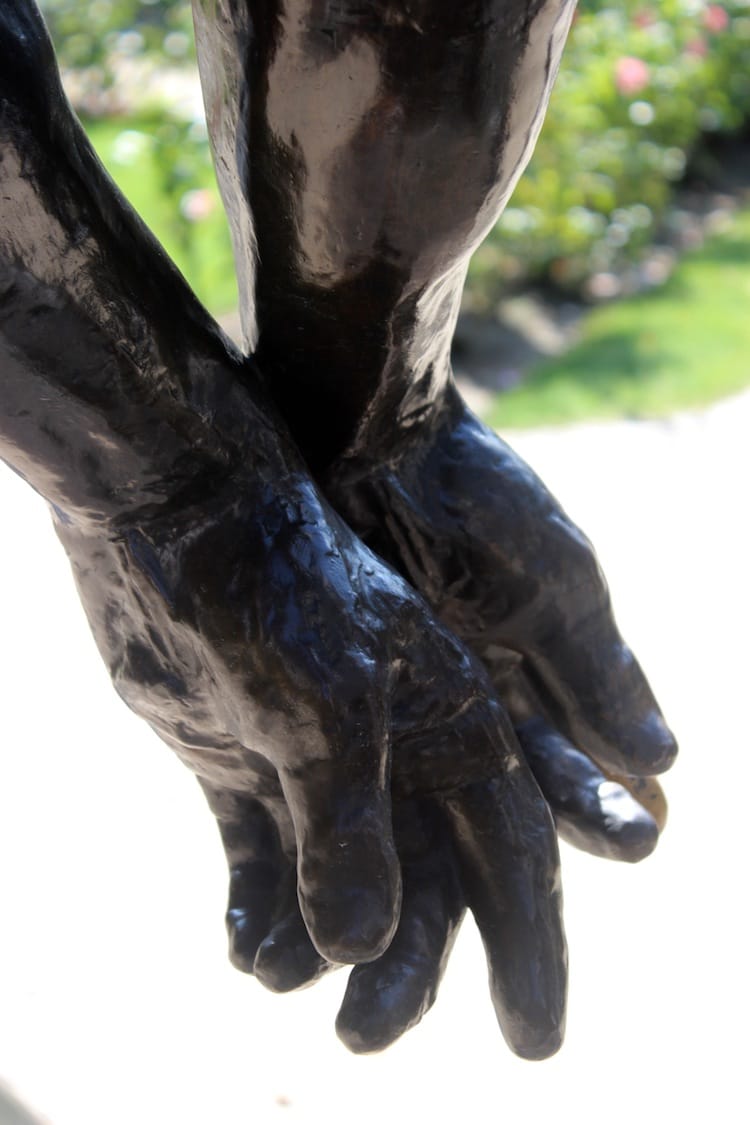
Photo: Miguel Hermoso Cuesta via Wikimedia Commons (CC BY-SA 4.0)
Related Articles:
3D Scans of 7,500 Famous Sculptures Available Online to Download and 3D Print
10 Best Sculpture Parks Around the World
20+ Brilliant Quotes About Art From Famous Artists and Great Creative Minds
